Industry Tactics That Prevent B2B Customer Churn
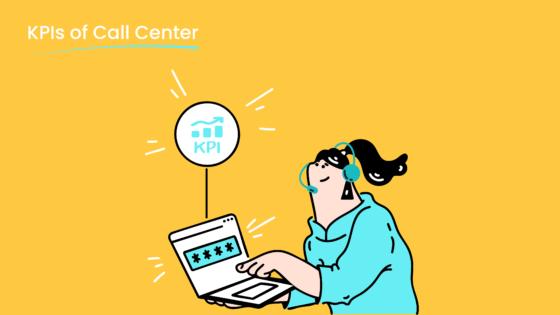
B2B companies face significant risks when they fail to prevent customer churn. The impact of b2b customer churn varies greatly by industry, as shown in the table below:
| Industry | Median Customer Churn Rate (2025) |
|---|---|
| Energy / Utilities | 11% |
| IT Services | 12% |
| Financial Services | 19% |
| Professional Services | 27% |
| Telecommunications | 31% |
| Manufacturing | 35% |
| Logistics | 40% |
| Consumer Packaged Goods | 40% |
| Wholesale | 56% |
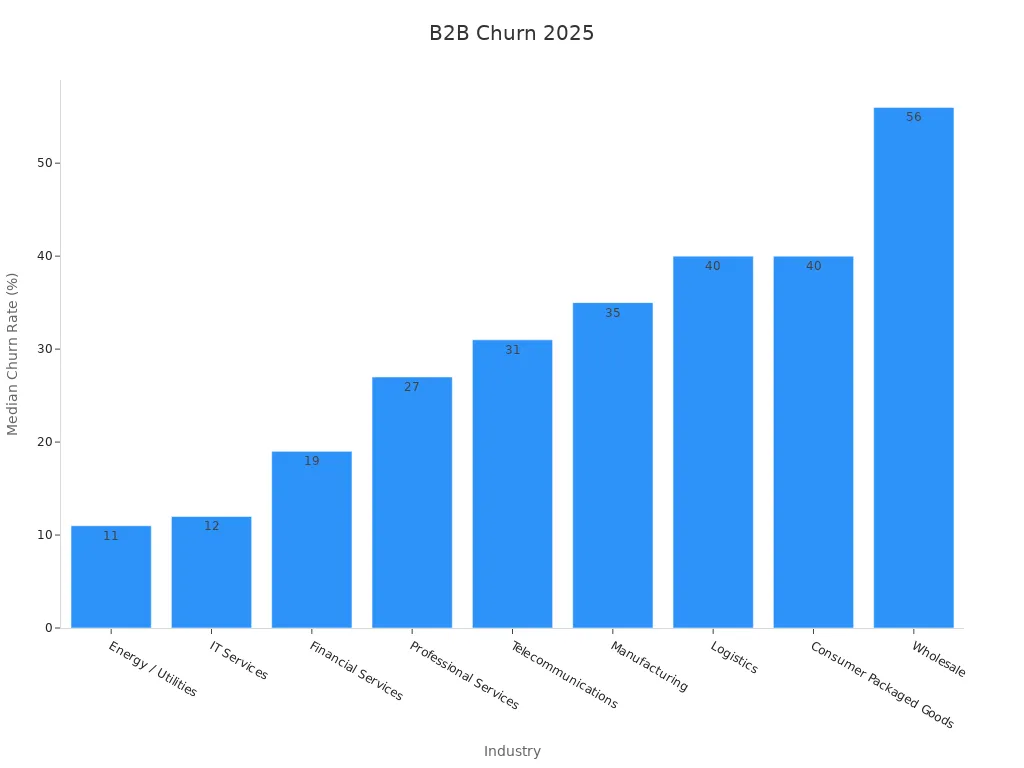
Increasing customer retention by just 5% can boost profit by up to 95%. Loyal B2B clients spend more and cost less to serve. Industry-specific tactics help companies achieve strong retention rates and stable growth. Sobot empowers businesses with omnichannel solutions that unify experience and drive retention in every sector.
What Is B2B Customer Churn
B2B customer churn refers to the rate at which business clients stop buying from a company within a set period. This metric helps organizations understand how many customers they lose and why. B2B companies track churn to measure the health of their customer relationships and to identify risks that could impact long-term growth.
Why Churn Matters
B2B customer churn has a direct effect on revenue and profitability. When a business loses clients, it not only loses recurring income but also faces extra costs to replace those customers. According to recent studies, avoidable churn costs U.S. businesses $136 billion each year. Service quality plays a major role, with 66% of consumers ending relationships due to poor service. Companies that resolve issues on the first contact can reduce churn by 67%.
| Statistic Description | Statistic Value | Business Impact |
|---|---|---|
| Annual cost of avoidable churn to U.S. businesses | $136 billion | Massive financial loss |
| Consumers terminating relationships due to poor service | 66% | Service quality is a major churn cause |
| Reduction in churn by solving issues on first contact | 67% | Customer service drives retention |
B2B customer churn also damages brand reputation and increases marketing expenses. Most customers do not complain before leaving, making silent churn a hidden threat. Companies like Sobot help B2B organizations reduce churn by improving customer experience through omnichannel contact center solutions.
Key Metrics
B2B companies use several key metrics to measure and manage b2b customer churn. The churn rate is the most common metric. It is calculated by dividing the number of customers lost during a period by the total number of customers at the start, then multiplying by 100%. For example, if a company starts with 1,000 clients and loses 75 in a month, the churn rate is 7.5%.
Other important metrics include Customer Acquisition Cost (CAC) and Customer Lifetime Value (CLV). CAC measures how much it costs to gain a new customer, while CLV estimates the total revenue a customer brings over their relationship with the company.
| Aspect | Description / Data |
|---|---|
| Definition of B2B Churn | Rate at which customers stop buying from a company over a set period. |
| Calculation Method | 1. Select a time frame (monthly, quarterly, yearly). 2. Count customers lost during that period. 3. Calculate churn rate = (customers lost / customers at start) * 100%. |
| Key Data Points | Customer counts at start and end of period, customer feedback, demographic and behavioral data. |
| Industry-Specific Churn Rates | Utilities: 11% Legal/Accounting: 27% Manufacturing: 35% Wholesaling: 56% |
| Interpretation | Lower churn in utilities due to difficulty in switching providers; higher churn in competitive sectors like wholesaling. |
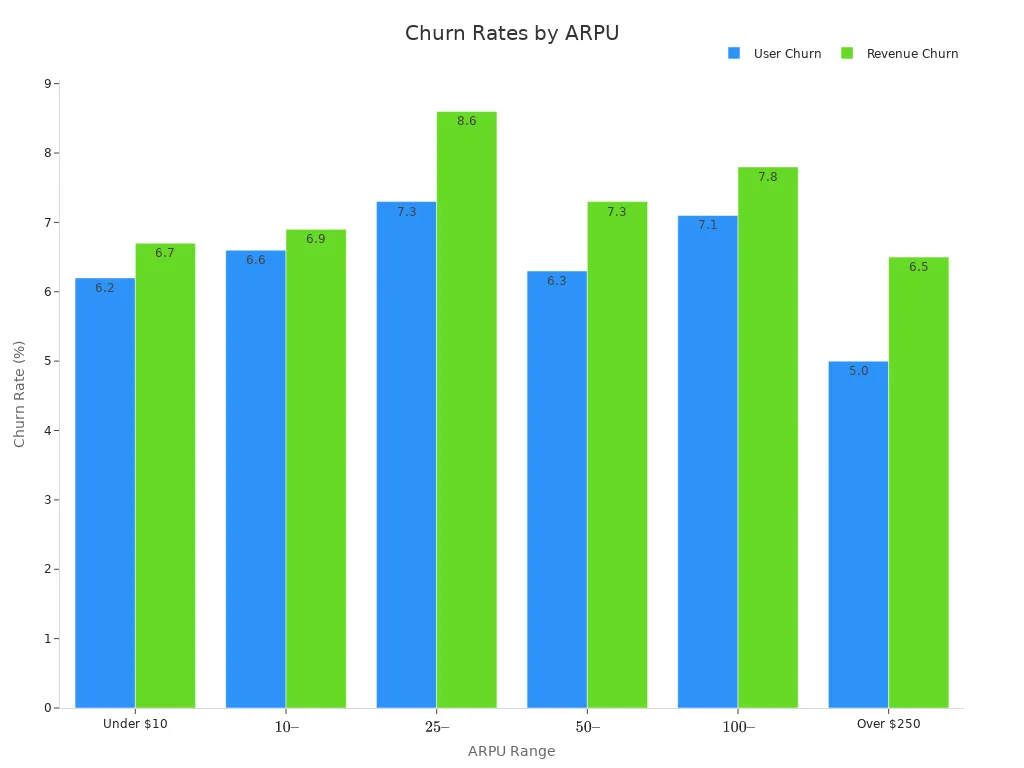
B2B companies also monitor behavioral indicators such as decreased engagement, negative feedback, and increased support requests. Advanced platforms like Sobot use AI and machine learning to analyze these patterns and predict b2b customer churn, enabling proactive retention strategies.
B2B Customer Churn Drivers
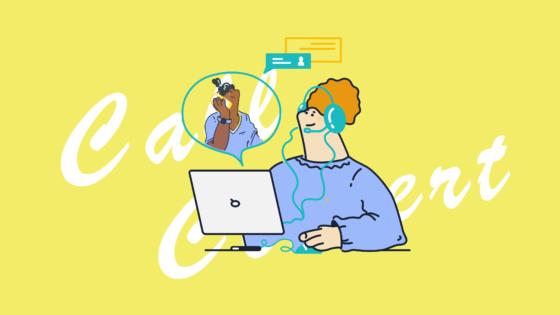
Service Gaps
Service gaps remain a leading cause of b2b customer churn. Companies often lose clients when they fail to meet expectations or deliver consistent service. Regular feedback collection through surveys and customer interaction data helps identify these gaps. For example:
- Surveys reveal dissatisfaction and unmet expectations in measurable ways.
- Analysis of response times and issue resolution rates uncovers patterns linked to service failures.
- Data shows a direct correlation between widening service quality gaps and increased b2b customer churn.
Tools like Insight7, SurveyMonkey, and HubSpot Service Hub help companies gather and analyze this data. By quantifying service gaps, businesses can target improvements that reduce churn and boost loyalty. Sobot’s omnichannel contact center solutions enable b2b organizations to monitor customer interactions in real time, ensuring prompt responses and consistent service delivery. This approach addresses b2b customer retention challenges by closing service gaps before they lead to customer loss.
Industry Pain Points
Every industry faces unique pain points that drive b2b customer churn. In SaaS, annual churn rates for mid-market businesses range from 5-8%, while startups may see up to 15%. E-commerce businesses experience monthly churn rates between 3-5%. These figures highlight the impact of unclear messaging, poor navigation, and inadequate support.
Companies that analyze customer pain points at least quarterly see a 15-20% improvement in retention rates. Poor customer service accounts for 14% of average churn, with 52% of b2b customers avoiding a brand for two years after a single bad experience. Sobot’s unified platform helps b2b companies track pain points across channels, making it easier to address b2b customer retention challenges and improve satisfaction.
Prevent Customer Churn in B2B
Customer Experience
Customer experience stands at the core of every successful B2B retention strategy. Companies that prioritize customer experience see measurable reductions in b2b customer churn. Enhancing customer support, improving onboarding, and engaging customers regularly all contribute to higher satisfaction and loyalty. For example, AI-powered support tools can reduce churn by up to 35% by providing fast, accurate responses across channels. Metrics such as Net Promoter Score (NPS), Customer Satisfaction Score (CSAT), and Customer Effort Score (CES) help organizations track progress and identify areas for improvement.
| Customer Experience Improvement | Churn Reduction Impact | Key Metrics |
|---|---|---|
| Enhanced customer support | Prevents customer loss | NPS, CSAT, CES |
| Improved onboarding | Reduces early churn | CLV, Onboarding Completion Rate |
| Regular engagement | Increases loyalty | Engagement Rate, Retention Rate |
| AI-powered support | Up to 35% churn reduction | First Response Time, Resolution Time |
Sobot’s omnichannel contact center solutions unify every touchpoint in the customer journey. By integrating voice, chat, and AI-powered automation, Sobot enables B2B companies to deliver seamless onboarding, proactive engagement, and personalized support. This approach not only improves customer experience but also helps prevent customer churn and drives long-term retention.
Tip: Closing the feedback loop by acting on customer input increases retention rates by 8.5% in B2B organizations.
Multi-Threading Stakeholders
Multi-threading stakeholders means involving multiple decision-makers and teams throughout the customer journey. In B2B environments, this approach strengthens relationships and reduces the risk of b2b customer churn if a single contact leaves. Companies like Target have improved retention by engaging executives, sales, marketing, and support teams to align on goals and address pain points.
A cross-functional strategy ensures that customer experience improvements reflect the needs of all stakeholders. Sobot’s unified platform supports collaboration by providing shared dashboards and communication tools. This alignment helps organizations achieve customer retention goals and build lasting customer loyalty.
Note: Engaging diverse stakeholders early leads to tailored solutions and measurable improvements in retention.
Early Warning Systems
Early warning systems play a vital role in helping B2B companies prevent customer churn. These systems use intent data, real-time alerts, and predictive analytics to spot at-risk customers before they leave. For example, tracking drops in product usage or negative feedback can trigger immediate outreach, allowing teams to address issues quickly.
- Intent data reveals when customers research competitors or express dissatisfaction.
- Real-time alerts based on usage trends and support tickets enable fast intervention.
- Integrated dashboards combine multiple data sources for a complete view of churn risk.
Sobot’s AI-driven analytics and unified data platform empower B2B organizations to monitor customer behavior, automate alerts, and take proactive steps. By identifying churn signals early, companies can improve retention and ensure a smooth journey for every client.
Customer Churn Strategies by Industry

SaaS and Technology
SaaS and technology companies face unique b2b retention challenges. High churn rates can quickly erode recurring revenue. Companies in this sector rely on key performance metrics such as customer retention rate, churn rate, and customer lifetime value to guide decisions. Tracking engagement patterns and support tickets helps identify at-risk customers early. Proactive onboarding, targeted training, and regular product updates improve customer experience and reduce churn. Sobot’s omnichannel solutions, including its Voice/Call Center, unify communication across channels and provide real-time analytics. This approach enables SaaS firms to deliver seamless onboarding, monitor customer satisfaction, and intervene before clients disengage. Enhanced customer engagement strategies have led to a 20% improvement in satisfaction for SaaS companies, directly boosting retention.
Companies that halve their churn rate can double customer lifetime value, supporting sustainable growth.
Manufacturing and Supply Chain
Manufacturing and supply chain businesses often struggle with integration issues, order mistakes, and price competition. These factors drive b2b customer churn. The network effect, where customers become deeply embedded in an ecosystem, increases stickiness and customer loyalty. Sobot’s Voice/Call Center integrates with existing systems, streamlining communication and reducing errors. Predictive analytics identify customers likely to churn, enabling targeted retention efforts. The table below highlights common churn causes:
| Cause of Customer Churn | Percentage (%) |
|---|---|
| Price increases | 39 |
| Finding a cheaper supplier | 30 |
| Order mistakes | 29 |
| Bad service experience | 27 |
| More convenient supplier | 26 |
| Faster supplier | 24 |
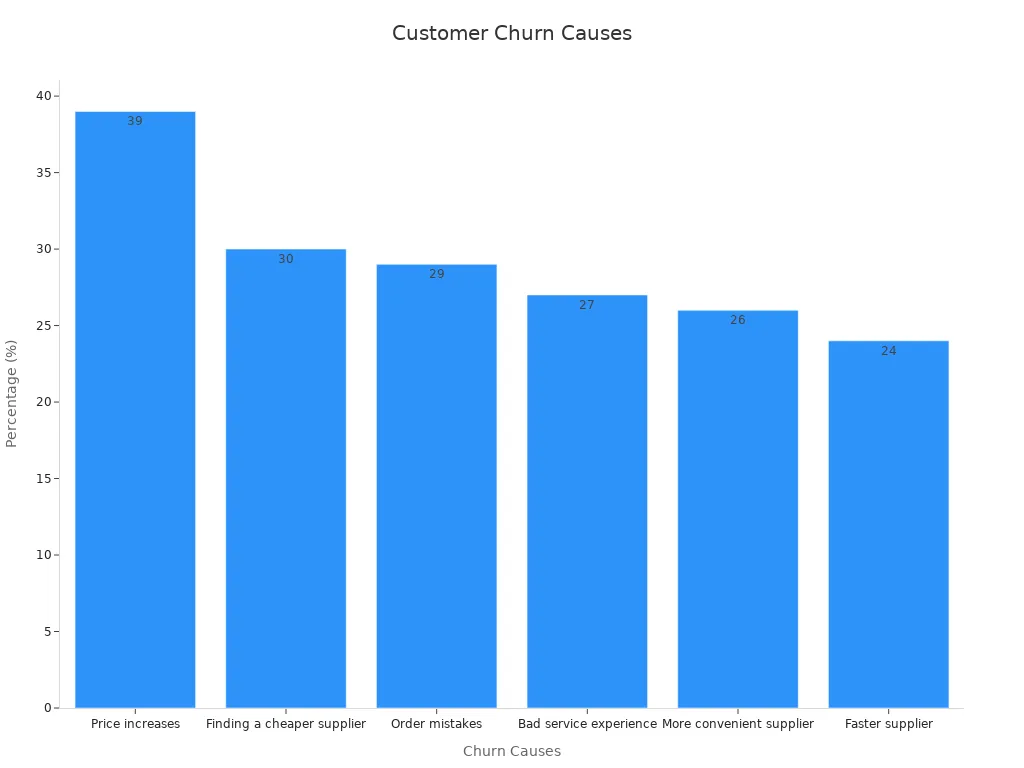
Reducing churn in manufacturing saves significant costs, as acquiring a new customer costs five to six times more than retaining an existing one.
Retail and Ecommerce
Retail and ecommerce companies must distinguish between voluntary and involuntary churn. Voluntary churn occurs when customers choose to leave, while involuntary churn often results from payment failures. Data analytics and AI help predict which customers are at risk, allowing for proactive engagement. Sobot’s omnichannel platform supports personalized marketing, loyalty programs, and fast customer support. Improving onboarding, simplifying website navigation, and offering multiple payment options reduce churn. Retailers that revamped their onboarding process saw a 25% increase in customer retention. Even a 5% improvement in retention can boost profits by up to 95%.
Personalized campaigns and loyalty rewards encourage repeat business and strengthen customer loyalty.
Financial Services
Financial services firms operate in a highly regulated and competitive environment. B2b clients expect secure, responsive, and personalized service. Sobot’s Voice/Call Center and unified data platform enable financial institutions to deliver consistent customer experience across channels. Predictive analytics and real-time alerts help identify clients at risk of leaving. Early intervention, such as tailored onboarding and proactive support, improves retention. Financial firms that use data-driven strategies see measurable reductions in churn and higher customer satisfaction scores.
- Real-time monitoring of customer interactions
- Automated alerts for at-risk accounts
- Seamless integration with CRM and compliance systems
These features ensure that financial services providers can prevent customer churn and maintain strong client relationships.
Professional Services
Professional services organizations, such as consulting and legal firms, rely on long-term b2b relationships. Simplifying renewal processes, increasing follow-ups, and using administrative renewals have reduced closure rates at renewal from 8% to 1% over four years. Sobot’s omnichannel solutions streamline communication, automate reminders, and centralize client data. Segmenting customers by actionability allows firms to target those most likely to churn with personalized offers and onboarding support. This proactive engagement, combined with timely outreach, can reduce churn rates by 5% to over 20%. Setting clear retention goals and using dashboards to track progress further strengthens customer loyalty.
Timely, relevant outreach and process improvements drive measurable gains in retention for professional services.
Sobot Solutions for Customer Experience
Sobot delivers a robust customer experience program that empowers businesses to improve retention and satisfaction at every stage of the journey. Its solutions combine advanced technology, seamless integration, and proven reliability. The following features illustrate how Sobot transforms the customer journey and drives measurable results.
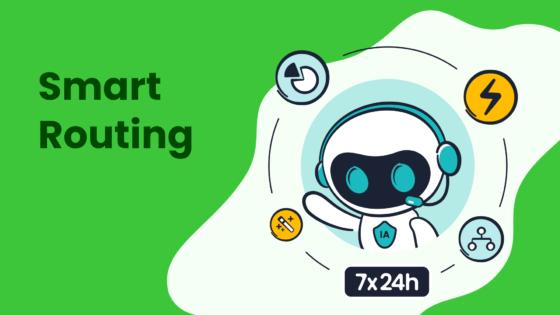
Voice/Call Center
Sobot’s Voice/Call Center solution enhances customer experience by providing intelligent IVR, real-time monitoring, and AI-powered voicebots. These tools help agents resolve issues quickly and accurately. Voice analytics improve agent performance through dynamic prompts and sentiment analysis, allowing teams to identify and retain at-risk customers. Real-time sentiment detection enables agents to de-escalate negative interactions, which reduces churn. Many contact centers now plan to adopt AI Voice Analytics, with 26% in 2024 and 42% by 2025. Sobot’s system stability, with 99.99% uptime, ensures uninterrupted support throughout the customer journey.
- Voice analytics reduce manual tasks, letting agents focus on resolving customer issues.
- Real-time solutions improve operational efficiency and customer satisfaction.
- Sobot’s global network supports businesses in over 50 countries.
AI and Automation
AI and automation play a critical role in Sobot’s customer experience program. AI-driven platforms streamline support, predict churn, and enable proactive engagement. Sobot’s AI Copilot reduces agent workload by 60%, manages ticket prioritization, and provides comprehensive summaries. These features lead to faster response times and improved retention. Automation tools also deliver personalized recommendations, increasing upselling and engagement by up to 15%. Predictive analytics identify churn risks, allowing teams to intervene before customers leave.
| AI/Automation Feature | Impact on Retention | Result/Statistic |
|---|---|---|
| AI-driven customer service | Enhanced engagement | Up to 67% retention improvement |
| Automation for CX | Improved efficiency | 80% of specialists report gains |
| Personalized recommendations | Increased upselling | 10-15% sales increase |
Unified Customer Data
Unified customer data systems form the backbone of Sobot’s retention strategy. These systems reduce acquisition costs by focusing on existing customers. Analytics identify pain points in the journey, enabling real-time, personalized interventions. Sobot’s unified platform helps businesses understand why customers leave and respond with targeted offers. This approach builds loyalty and supports sustainable growth.
- Lower acquisition costs by engaging current customers.
- Enable data-driven retention strategies for repeatable growth.
- Improve customer experience with real-time analytics.
- Increase loyalty through personalized outreach.
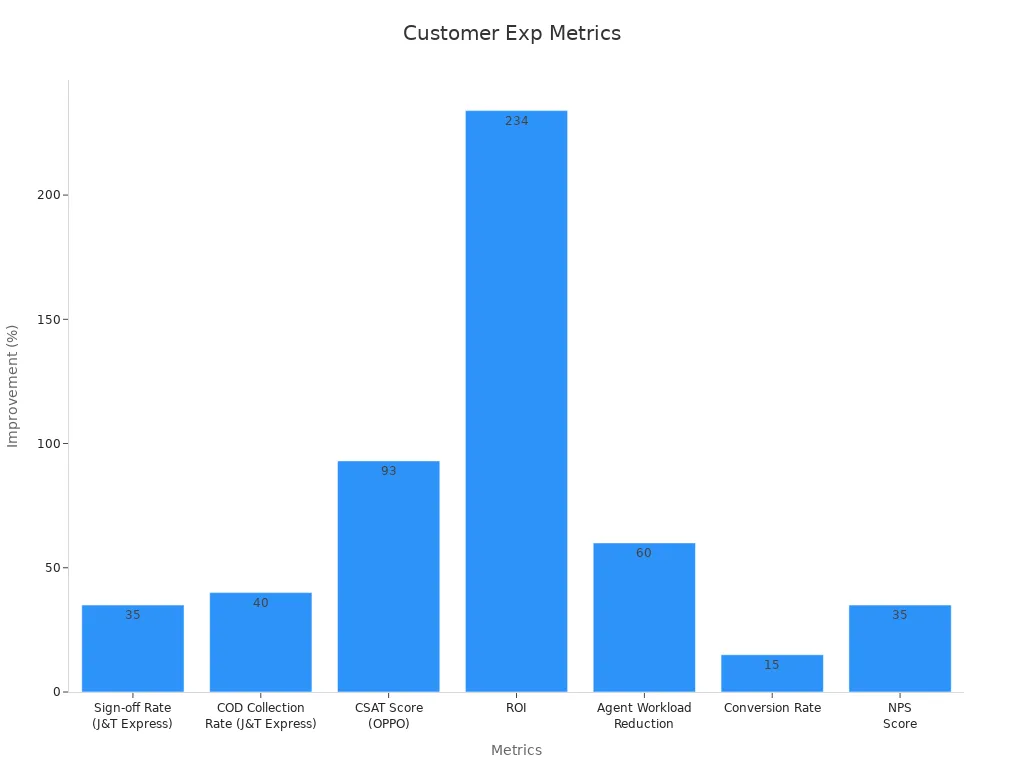
Sobot’s achievements, such as official WhatsApp BSP status and a 99.99% stable system, reinforce its commitment to delivering a superior customer experience and maximizing retention.
Case Studies
Agilent Success Story
Agilent, a leader in life sciences and diagnostics, faced high volumes of customer inquiries and complex service needs. The company partnered with Sobot to address b2b customer churn and improve efficiency. By integrating Sobot’s omnichannel workbench and AI-powered chatbot, Agilent transformed its customer service operations.
- Service efficiency increased sixfold.
- Operational costs dropped by 25%.
- Customer satisfaction reached 95%.
Sobot’s unified platform enabled Agilent to provide 24/7 support. The AI chatbot handled routine questions, freeing agents to focus on complex cases. Intelligent routing directed customers to the right experts, reducing wait times and improving first-contact resolution. Agilent’s experience shows how advanced technology and omnichannel solutions can reduce b2b customer churn and deliver measurable business value. Read more about Agilent’s results.
Other Industry Examples
Many organizations across industries have achieved significant reductions in b2b customer churn by adopting targeted strategies and Sobot’s solutions.
- Terago Communications Inc. reduced churn and improved retention with personalized support and loyalty programs.
- A SaaS provider used predictive analytics to identify at-risk clients, lowering churn through targeted outreach.
- A retailer cut churn by integrating online and offline channels with an omnichannel approach.
- LiveX AI launched AI-driven re-engagement campaigns, reducing churn by 30% in six months and tripling retention rates.
- A telecom client doubled services ordered and increased win rates by 15% after optimizing customer journeys.
These examples highlight how real-world companies use data-driven insights, AI, and omnichannel platforms to address b2b customer churn. Sobot’s solutions help businesses in manufacturing, retail, and financial services unify customer data, automate engagement, and deliver proactive support. This approach leads to higher retention, lower costs, and stronger customer loyalty.
Best Practices to Prevent Customer Churn
Checklist
A checklist-driven approach helps companies systematically reduce customer churn. Teams should track key performance indicators (KPIs) such as Customer Churn Rate, Net Promoter Score (NPS), Customer Satisfaction Score (CSAT), and Customer Effort Score (CES). These metrics reveal how well a business meets client needs and where friction points exist. Companies can use benchmarking frameworks like those referenced by Databox and Stripe to compare their churn rates with industry peers and set realistic targets.
- Evaluate customer churn monthly, quarterly, and yearly.
- Analyze churn across all channels, including voice, chat, and email.
- Track churn by campaign to optimize marketing efforts.
- Detect trends and anomalies early to prevent escalation.
- Compare churn with Customer Lifetime Value for deeper insights.
- Align churn metrics with client goals for strategic planning.
Sobot’s unified platform empowers teams to monitor these KPIs in real time, enabling data-driven decisions that improve retention. Regularly reviewing this checklist ensures that customer churn remains under control.
Continuous Improvement
Continuous improvement is essential for long-term customer churn reduction. Companies should implement robust onboarding, maintain regular check-ins, and personalize experiences. Data-driven feedback collection and predictive analytics help identify at-risk customers and guide targeted interventions.
| Intervention Type | Churn Rate (%) | Reduction vs. Control (%) |
|---|---|---|
| Control Group | 15.67 | N/A |
| Satisfaction Questionnaire | 10.94 | ~5.0 |
| Free Incentives | 12.13 | ~3.54 |
| Event Invitations | 12.88 | ~2.79 |
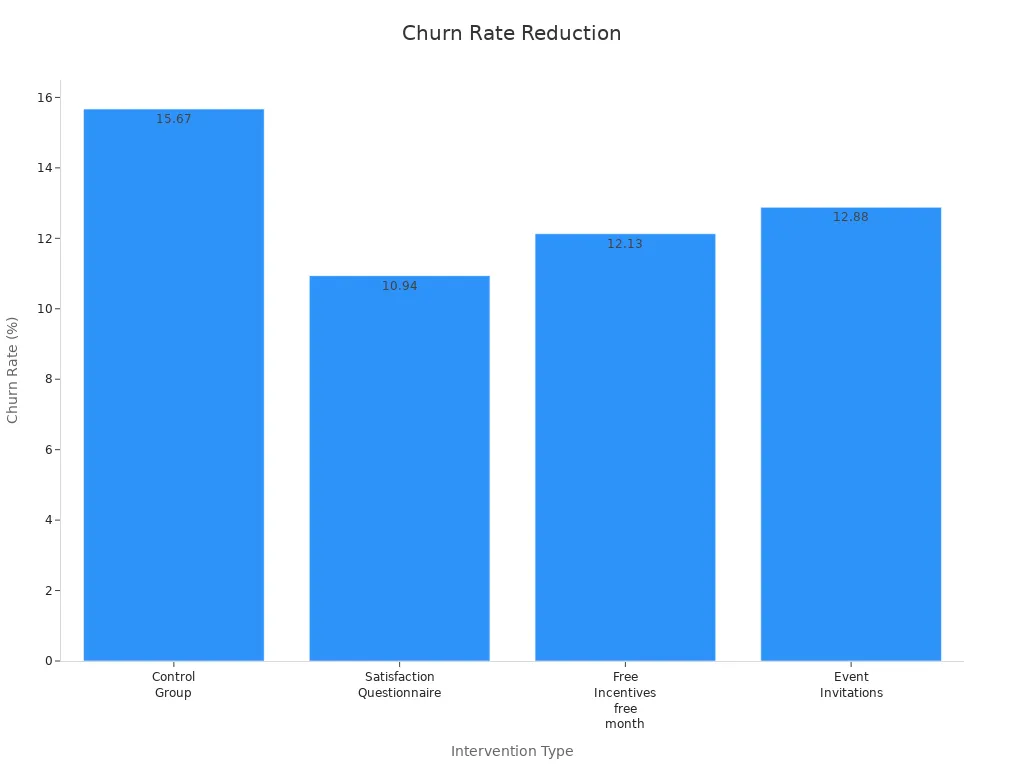
Sobot’s omnichannel solutions support continuous improvement by enabling ongoing feedback, rapid response, and personalized outreach. Companies that act on customer insights build trust and loyalty, achieving permanent reductions in customer churn.
Industry-specific strategies help b2b companies reduce churn and drive growth. Sobot empowers b2b organizations with tailored solutions that unify customer data and automate engagement. Companies see strong results:
- Personalized loyalty programs boost retention, with 91% of consumers preferring tailored rewards.
- Automated re-engagement campaigns increase open rates by 15%.
- Predictive analytics lower b2b churn by up to 15%.
B2b leaders should review their churn risks and explore Sobot’s omnichannel platform for customized retention solutions. Reach out to Sobot for a demo and start building lasting b2b relationships.
FAQ
What is the most common cause of B2B customer churn?
Poor customer service remains the top driver of b2b customer churn. Studies show that 66% of clients leave after a single bad experience. Companies like Sobot help reduce churn by providing omnichannel support and fast response times.
How can companies predict B2B customer churn?
Companies use data analytics and AI to spot early warning signs of b2b customer churn. For example, Sobot’s unified platform tracks engagement, support tickets, and feedback. Predictive analytics help teams intervene before clients decide to leave.
Why does industry-specific strategy matter for B2B customer churn?
Each industry faces unique churn risks. For instance, manufacturing sees high churn from order errors, while SaaS companies lose clients due to poor onboarding. Sobot tailors solutions to address these industry-specific b2b customer churn challenges.
How does Sobot help reduce B2B customer churn?
Sobot offers omnichannel contact center solutions, AI-powered chatbots, and unified customer data. These tools improve customer experience, automate engagement, and provide real-time insights. Companies using Sobot have seen up to a 25% drop in b2b customer churn.
What metrics should businesses track to manage B2B customer churn?
Key metrics include churn rate, Net Promoter Score (NPS), Customer Satisfaction Score (CSAT), and Customer Lifetime Value (CLV).
Tracking these helps companies understand b2b customer churn patterns and measure the impact of retention strategies.
Learn more about churn metrics.
See Also
Effective Techniques For Managing Call Center Quality
Enhance SaaS Customer Service Using Live Chat Methods
Top Ten Ways To Improve Live Chat Customer Experience
